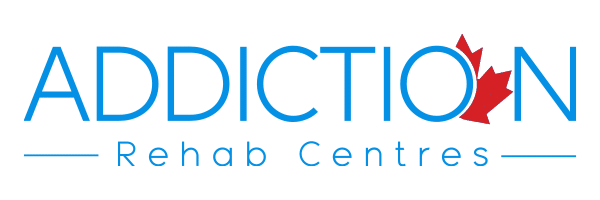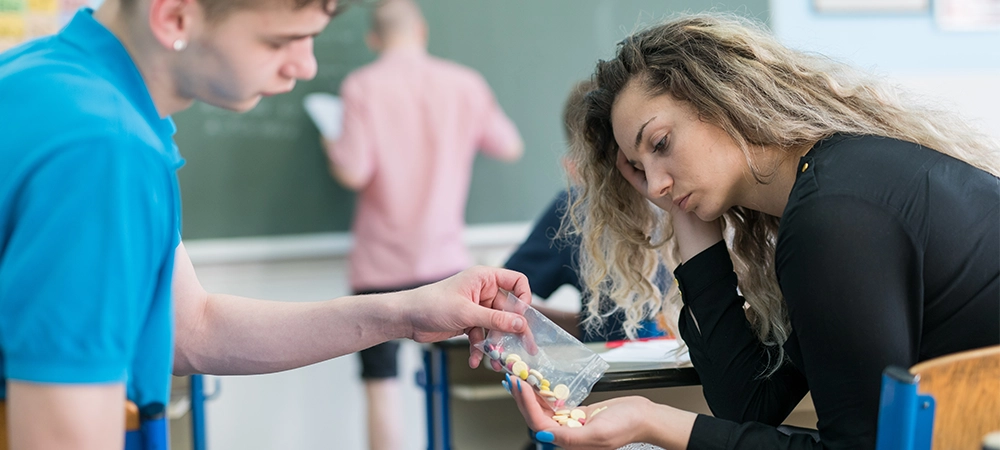How Teachers Can Help Kids Who Do Not Have Parental Support
Addiction Among Youth and Their Families – An Ongoing Concern
Raising awareness about addiction through media campaigns has increased understanding and saved lives. Society learned the impact of driving while intoxicated, and the stigma associated with that behaviour resulted in more people intervening with a friend about to drive under the influence of drugs or alcohol, and fewer fatalities.
In spite of all of the research conducted and all of the available education, both of which have impacted the prevalence of addiction, substance abuse continues to be a problem for millions worldwide. While alcohol and cigarette use have actually declined, more than half of new users begin with marijuana, and prescription drug abuse – in particular, opioid pain medication – has reached epidemic proportions.
Alarmingly, this is beginning with individuals as young as nine or ten, and with a vast majority, before they leave high school. The younger drug and alcohol use begins, the greater the likelihood of developing a substance use disorder.
Addiction impacts academic performance, leads to gaps in schooling, and may result in expulsion or dropping out. Mental health problems often develop as co-occurring disorders. The young person may be self-medicating the symptoms of these conditions, particularly if they are undetected and untreated, and not be aware that this is the reason for the drug and alcohol use.
It is crucial to identify and intervene with substance abuse and any related mental illness immediately, in order to obtain proper treatment and to mitigate the impact on the adolescent’s life. The responsibility for this has traditionally fallen exclusively to the families.
However, societal roles are evolving, and educators are taking more of an active role in character education and teaching the whole child. They spend a great deal of time with their students, and they develop a strong connection. Teachers may be the first to see the signs of addiction and are in a unique position to be able to provide meaningful support. Rather than waiting for parents to make first contact, schools should do so as soon as they suspect a problem.
Another reason not to leave intervention entirely up to the family is that the parents may have their own challenges with substance abuse and mental illness. Poor performance at school, a higher risk of developing anxiety and depression, earlier onset of experimentation with drugs and alcohol, and a greater probability of becoming addicted are all associated with growing up in a home where substance abuse is present.
The efforts to educate and raise awareness need to continue, as does increasing support from public schools. Many boards are already using ground-breaking approaches to intervening with substance abuse among students and their families, with great success.
Recognizing Addiction in Adolescents
Significant changes in behaviour and academic performance are strong indicators of addiction. A sudden drop in grades, change in friends, increased absenteeism, and worsening hygiene are all common symptoms. In an attempt to hide their addiction, adolescents typically have an explanation for their behaviour and difficulties at school.
Signs of alcohol and drug use in the classroom of which teachers and administrators should be aware include bloodshot eyes, falling asleep in class, a lack of responsiveness, tardiness, leaving the room unexpectedly, incomplete or missing assignments, and talking about drugs and alcohol with peers. Young people suffering from substance use disorders are unable to learn, especially if they are coming to school intoxicated.
The physical dependence on a substance can occur after one use. This results in cravings for more, and withdrawal symptoms can begin as soon as consumption stops. More and more alcohol or drugs are then needed to achieve intoxication, and tolerance develops. This leads to even more cravings, worsening symptoms of withdrawal, and addiction to the substance.
Eventually, a psychological dependence will develop in addition to the physical one. This occurs when the individual feels unable to function emotionally without the drug, and that they need to have it. They will then do whatever they need to in order to obtain the drug. This may include stealing it, or the money to purchase it, usually from a dealer or classmate.
Adolescents suffering from alcohol or drug addiction frequently commit crimes and engage in violent behaviour. Difficulties with law enforcement are often a sign that they are no longer just experimenting with drug and alcohol use, or trying to impress their peers, and that they have developed a substance use disorder.
Responding to the Addiction in Adolescents
Watching a young person suffer and destroy their life is devastating. Any caring adult wants to intervene and help. It is critical to consider the best way to do that, especially with adolescents. Drugs and alcohol are seen by addicts to be a solution to depression, anxiety, trauma, parental substance abuse, peer pressure, or any situation that makes life unbearable. The motivation to keep using drugs and alcohol is strong, and not easily altered.
A private conversation is more respectful than a lecture in front of classmates. This can go a long way toward gaining trust and having a young person acknowledge the concerns. Sharing what has been observed and that everyone just wants to help is a good place to start the conversation. Referral to a school counsellor for further assessment may be beneficial as long as it comes with assurance and commitment to the student that confidentiality will be maintained.
The parents or guardians must be contacted as well. Depending on the situation in the home in terms of substance abuse by other family members, they may need support as well. Ideally, the family and school will work together to access appropriate treatment for the adolescent.
Intervention That Leads to Recovery
The best intervention is prevention. Given the significant risk factors associated with substance abuse, stopping experimentation with drugs and alcohol before it begins has been the focus of educators and school districts for several years now, with some success. Beginning the education in elementary school is essential, as is using research-based approaches.
According to Public Safety Canada, the most effective programs teach students to understand the influence of peer pressure, develop the skills to resist it, and how to advocate for themselves. Improving study skills and communication, and replacing negative peer relationships with positive ones, are all important tools for young people to have.
Having a close connection with a family member, particularly a parent, can also be a factor in helping to prevent substance abuse problems. A strong relationship with a teacher or other educator, one who is caring and non-judgemental, can have a similar effect.
It is important for administrators and teachers to communicate with parents or guardians often, and to develop a rapport. This will help to facilitate difficult conversations about a young person’s possible alcohol and drug use. This news will likely be unwelcome. The family may not be ready to accept the fact that their child could have a problem, and they may choose to do nothing, at least initially.
The family may also be unable to provide support because of any number of reasons, including substance abuse problems in the home. If they are unable or unwilling to help, the school may be the only access to treatment for the young person.
Responding to the Family’s Addiction
The National Institute of Drug Abuse (NIDA) reports that approximately 25% of children in the United States grow up in a home where drug and alcohol abuse is present. When one or more adults have problems with substance abuse, children are twice as likely to develop addictive disorders themselves, and they face many challenges.
Being raised in a family with substance abuse problems can be frightening and very lonely. These children often end up taking on adult responsibilities at a very young age, they feel pressure not to tell anyone, and they frequently live in fear of their parents. Many also feel guilty and blame themselves.
As a result, children of addiction develop a poor self-image, a deep mistrust of others, and impairment of social behaviour that endure into adulthood. In addition to the potential health risks, this can result in school failure, difficulties obtaining and maintaining employment, problems with personal relationships, and involvement with law enforcement.
If the parent’s substance use disorder leads to marital problems and/or the children are removed from the home and placed in foster care, this significantly increases the impact of these challenges.
Historically, addiction research has focused primarily on the effects of drug and alcohol use on those addicted, not those close to them. In recent decades, groups like Al-anon, Al-ateen and Adult Children of Alcoholics (ADAC) have begun to appear, and the focus has evolved to include the problems faced by the family members as well.
In addition to raising public awareness, these organizations provide a welcoming, non-judgmental environment. They may be a safe place to start the recovery process or to begin to understand life as a child of addiction.
A school can be instrumental in helping children from homes with substance abuse. They have access to internal resources like the school counsellor and educational programs, and they may also be able to connect families and students to community agencies and support outside of the school.
Schools Doing More
Maddy Nadeau is a child of addiction. Both of her parents have substance abuse problems and were unable to care for her, leaving the job to her sister Devon. Family members tried to help, and the girls moved around between relatives for several months until being placed in a foster home. Among the more fortunate in similar circumstances, they were taken into care, and eventually adopted by Sarah Nadeau.
Both sisters had problems with depression and anxiety, as well as challenges with academic performance. Maddy, who had been exposed to opioid use while in utero, struggled even more, particularly with schoolwork. The effect of the drugs on a developing brain like hers makes cognitive tasks more challenging, often leading to school failure.
Again, fortunately for Maddy Nadeau and her sister, the school they attend has intervention programs that are different, that are proving very effective. As a result of the number of deaths due to opioid overdoses in their state, Massachusetts has employed treatment counselors from a private agency to screen and treat students who are at risk for substance abuse and offer mental health services at the school.
Providing these services onsite, and funding them completely for anyone who needs them, even those without private insurance, means that young people don’t have to rely on a family member to access treatment. The counsellor is also an expert on mental health, unlike most school counsellors, whose primary role is to give guidance on academic progress and career options.
In addition to the intervention being provided directly at the school, the delivery of the curriculum is flexible, and designed to support adolescents with a substance use disorder or mental illness. This approach is new, but it has already resulted in improved attendance and academic performance, and it has had a positive impact on the emotional well-being of the students, including both of Sara Nadeau’s daughters.
The opioid epidemic in West Virginia has also led to radical changes in public school education. The state has one of the highest overdose rates in the country and has seen an alarming rise in the number of infants being born dependent on drugs.
The number of children placed in foster care has increased by 25% in the past few years. Stories about living with a relative, a mom locking herself in the bathroom to do drugs, or visits to a family member in jail are common in these classrooms, where educators face an unprecedented challenge.
Understanding the unique needs of these children is the first step, and West Virginia schools are doing that. Realizing that no one may be there to wake them up in the morning, and making allowances for tardiness is part of the alternative approach to teaching, and intervening more effectively in the lives of children dealing with the challenges of living in a home with addiction.
Several programs have been put in place. The newest of these is “Handle with Care”, which includes a proactive involvement with local law enforcement agencies who alert the schools if there have been any issues in the community with family members. Administrators and staff have been trained on how to best provide support emotionally while adjusting expectations appropriately in terms of behaviour and school work.
A Changing Reality
The needs of students today are very different than they were even a few decades ago. More than ever, public schools may be the one place where students can go to feel safe and get the care they need. Alternative programs for students with a substance use disorder or mental illness, or whose family members are struggling, exist in many school districts, and they can be the difference between a lifetime of addiction and involvement with law enforcement, and sustainable recovery.









